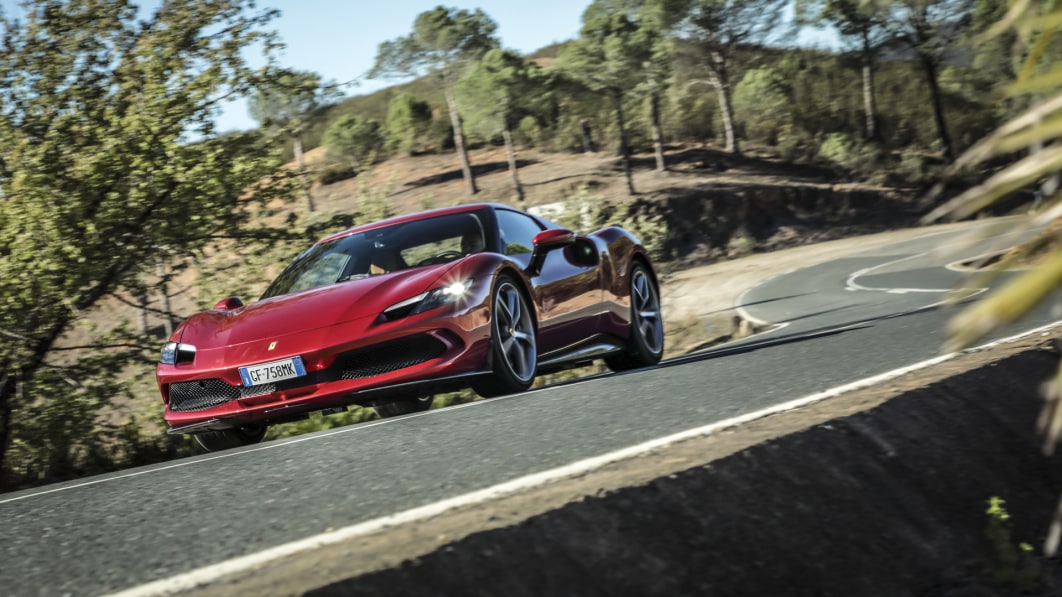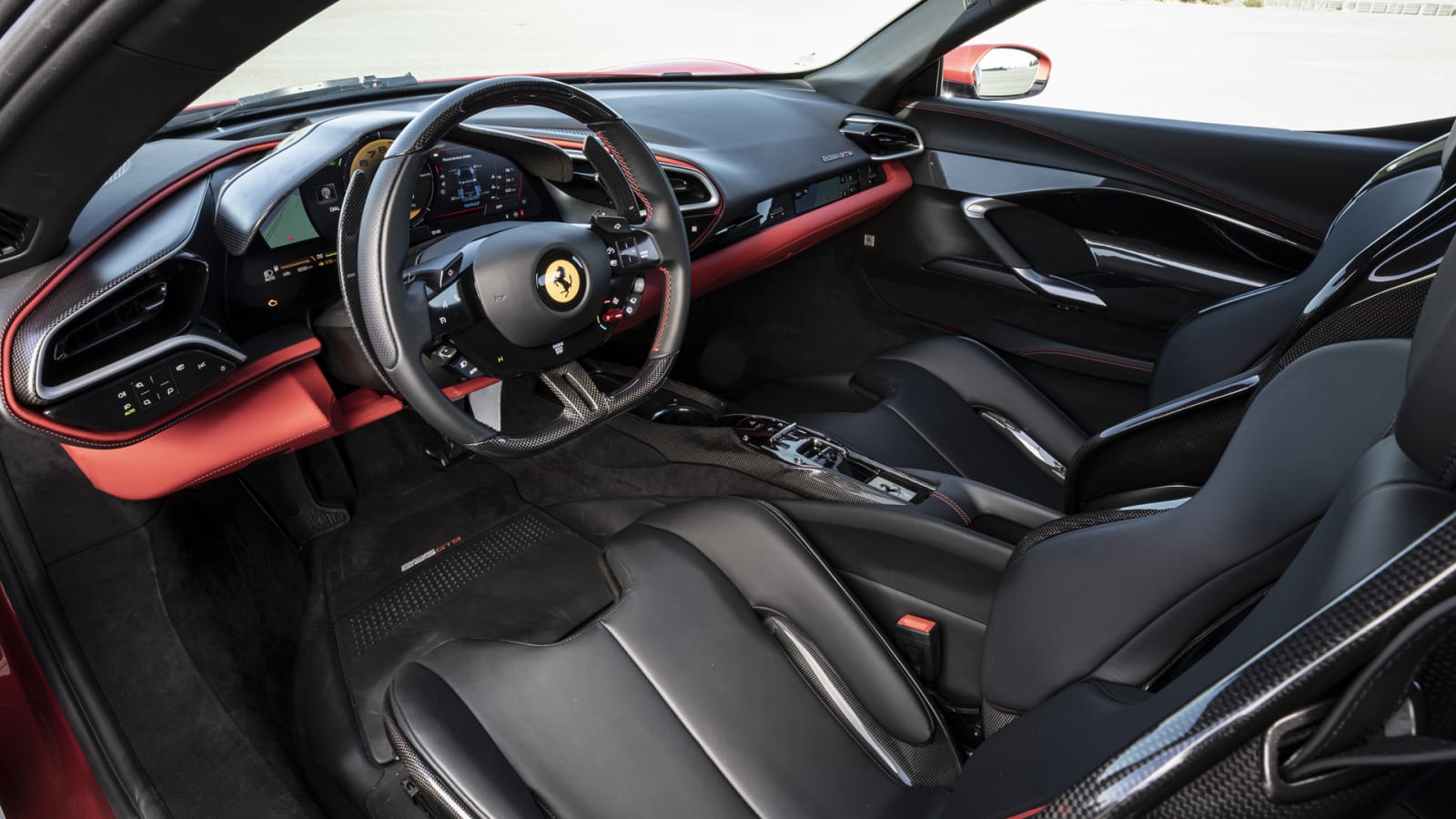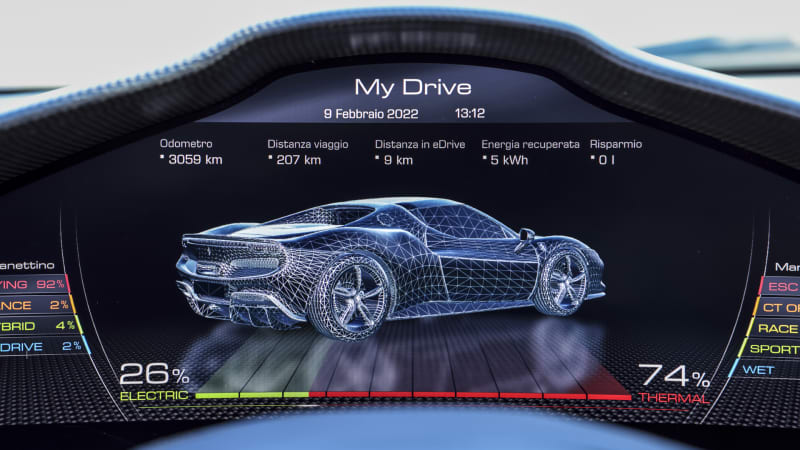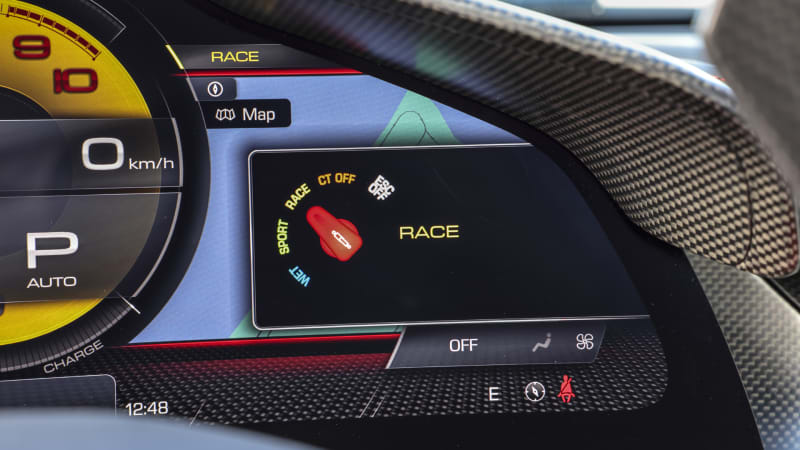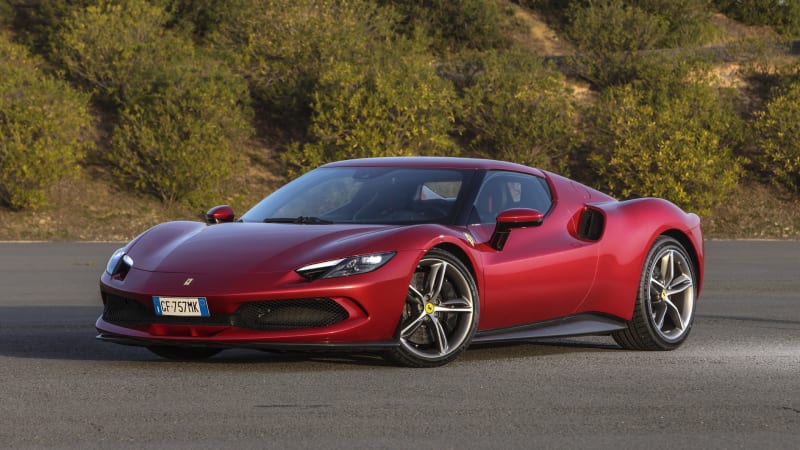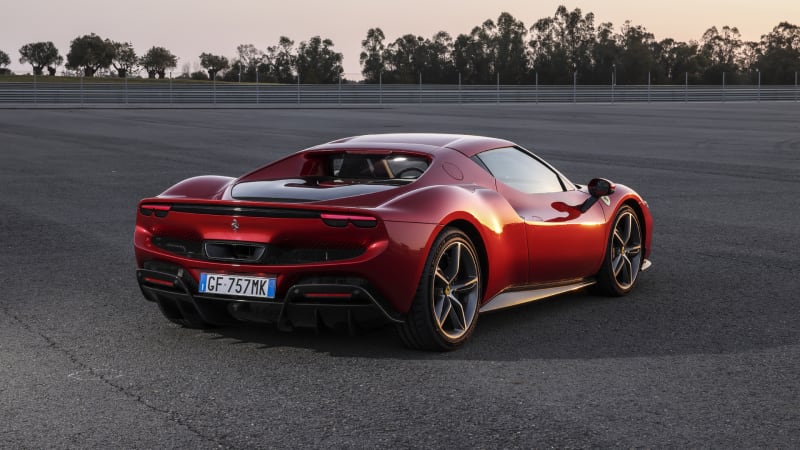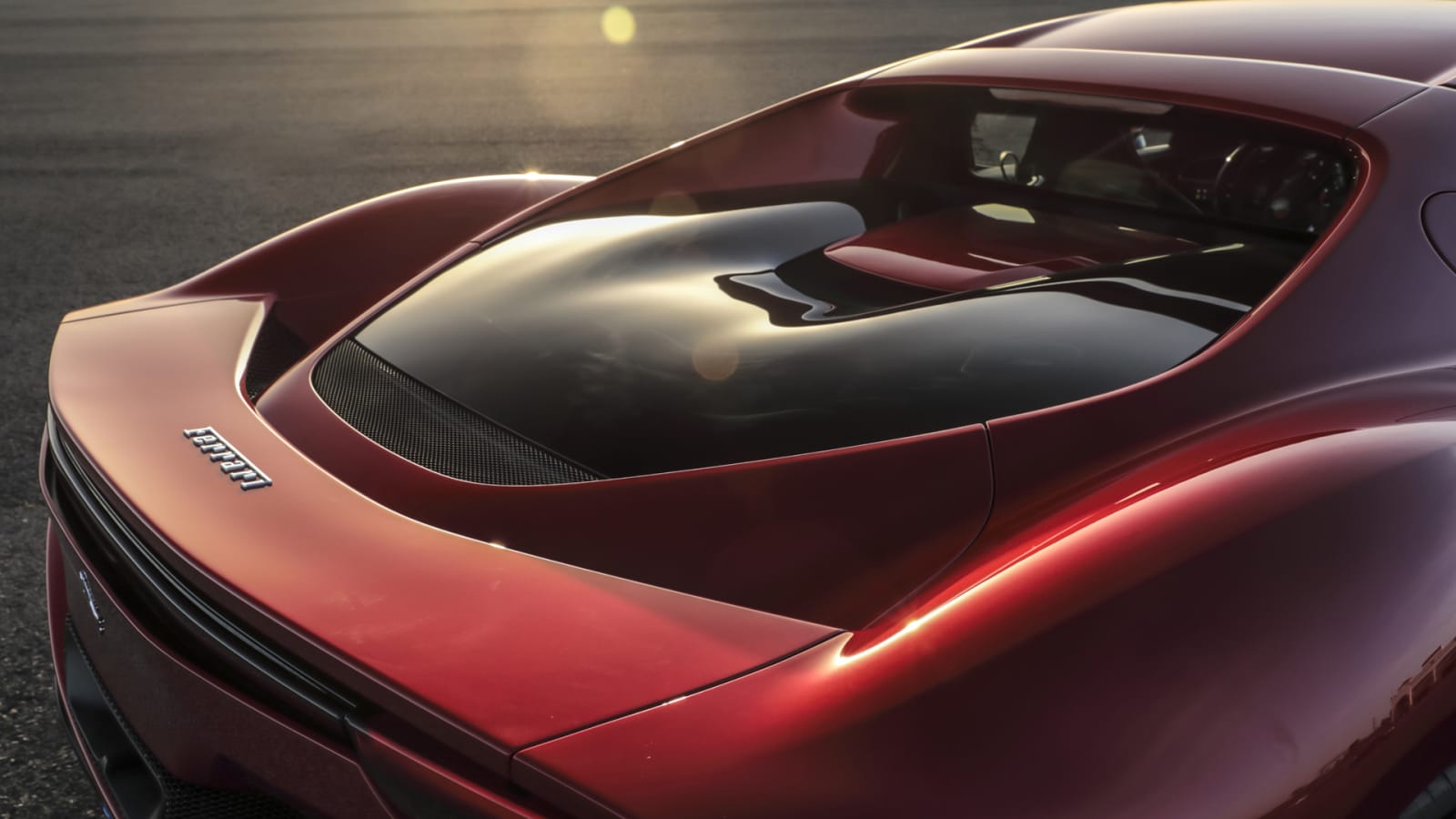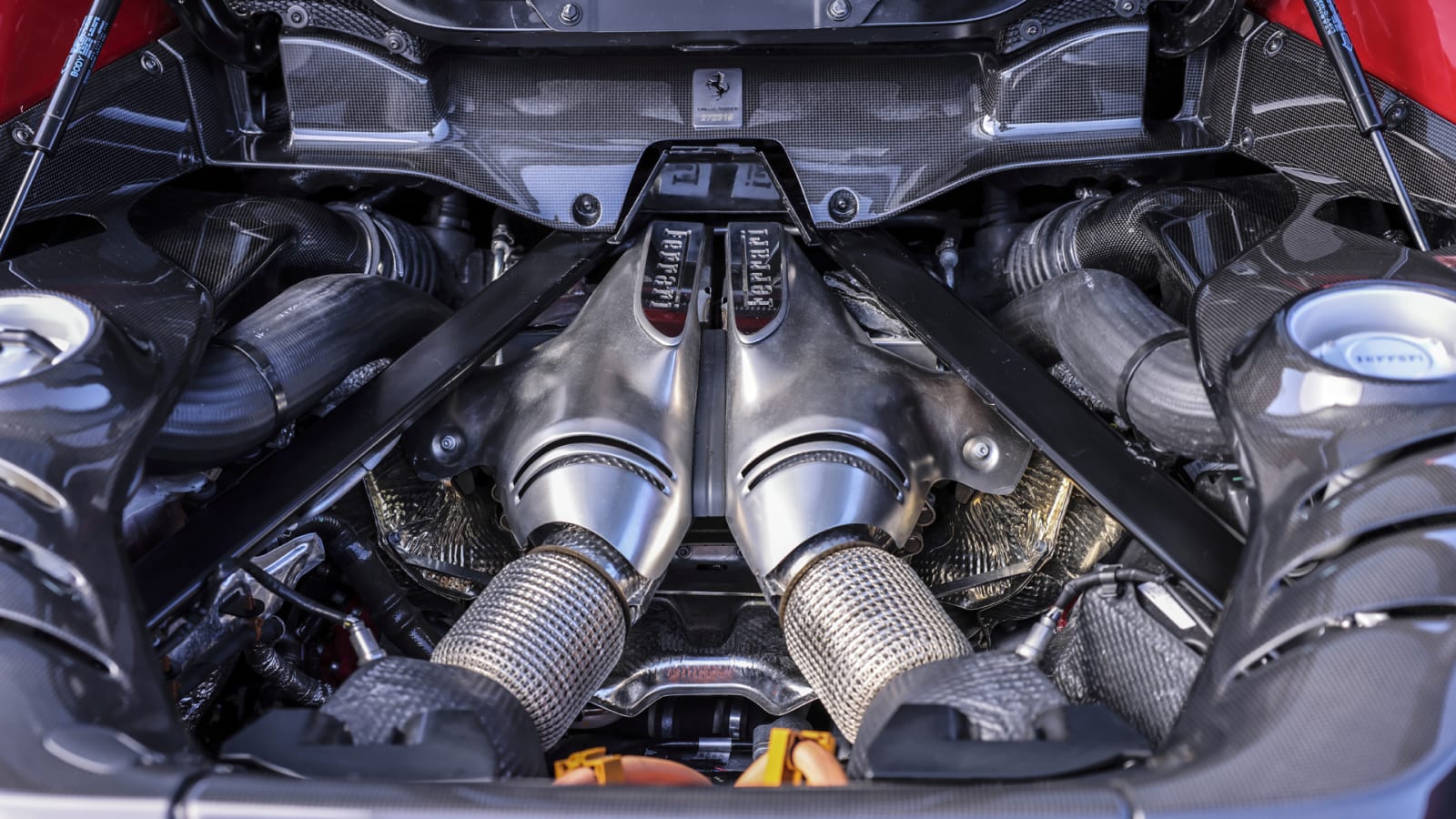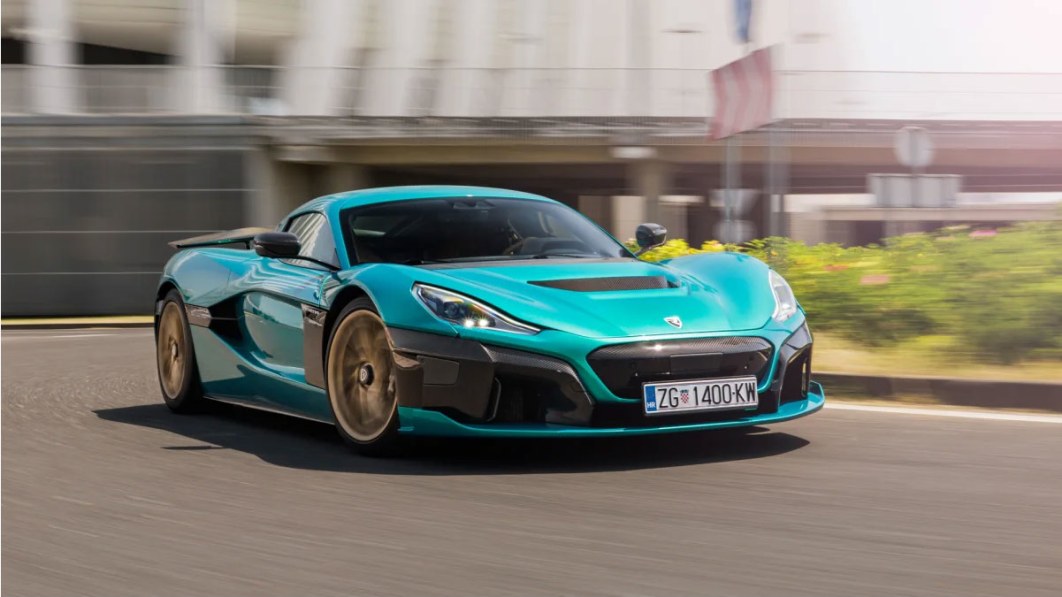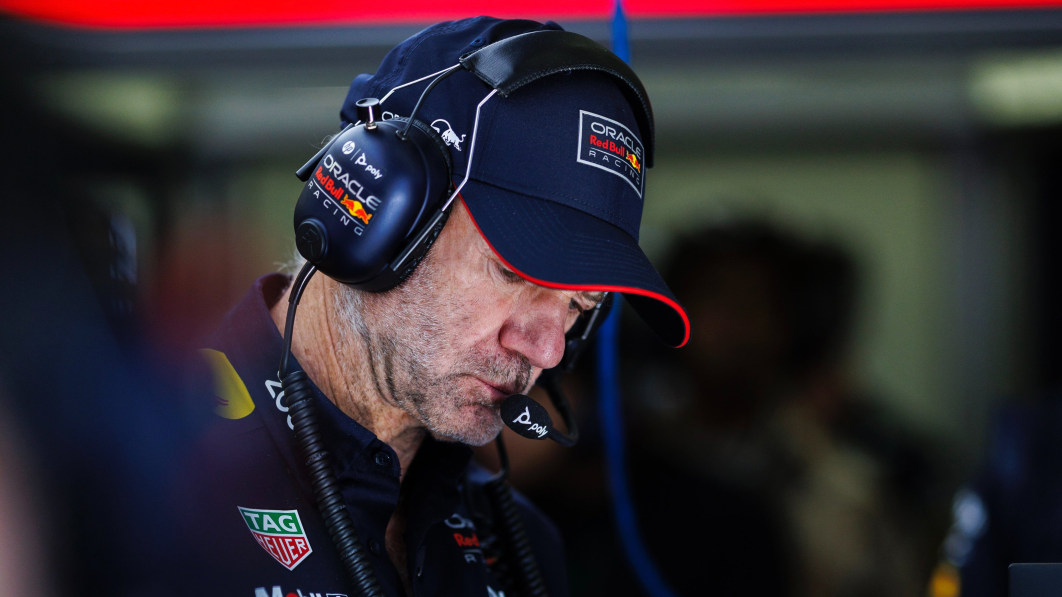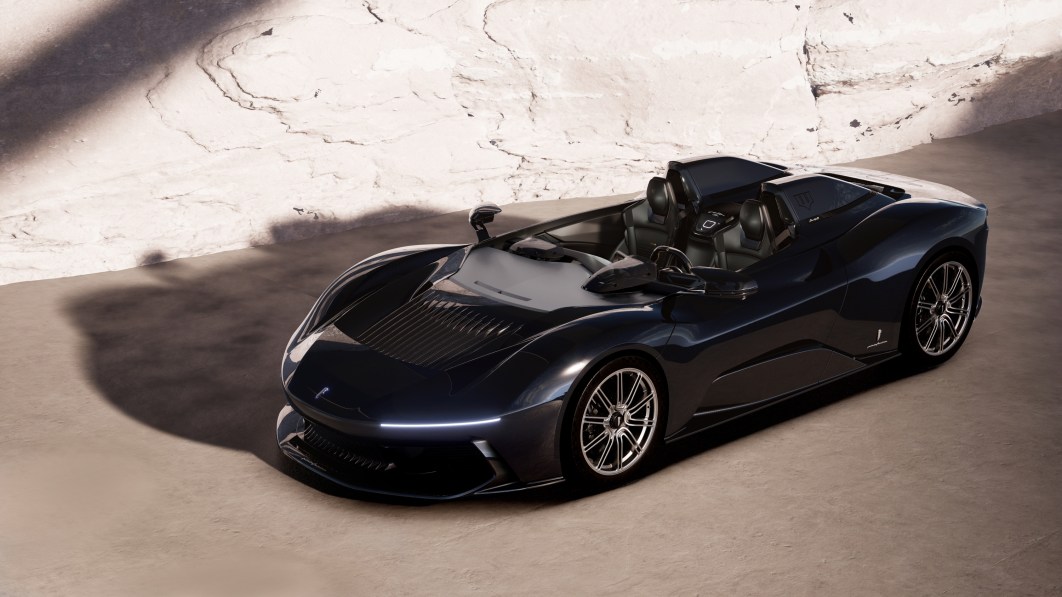Seville, Spain – Even when its founder Enzo was a pup, Ferrari was famously wringing maximum performance from miniscule engines. Today, that spirit lives on in the Ferrari 296 GTB plug-in hybrid – the first real V6 road car in Ferrari history – and a blistering track romp and road trip through Andalusia, Spain, proves again that automotive brilliance often comes in bite-sized packages. That talent, now combined with the modern shove and zero tailpipe emissions of electricity (in short distances) is coming in handy as regulators demand gasoline engines be downsized or eliminated entirely. When downtown Rome finally says basta to internal-combustion cars, the 296 GTB will get a free pass and a proud salute from locals.
This Ferrari will draw its share of wolf whistles as well. New tech aside, the 296 GTB is more old-school Ferrari in styling; a swoopy object of lust from its flying buttresses to a carved-out Kamm tail.
Press the haptic e Drive switch on the 296’s exotic steering wheel and it can cover 15.5 miles on pure electricity at up to 84 mph. Its twin-turbo 3.0-liter V6 is sidelined via an electric clutch, and a ghostly hum emanates from within. No, that’s not the sound of Enzo turning in his grave. Just the opposite, I’d say. That dude loved to win, even (or especially) when people called him crazy, and said his tiny 12-cylinder jewels (Phrasing? -BH) would never work (Oh, it got worse -BH).
So if you assume the 296 GTB is the Ferrari customers must “settle for,” think again. This short-wheelbase, mid-engine Ferrari is gorgeously evocative of classic models like the 250 LM, including roller-coaster haunches that seem extruded from a fast-flowing body. With a ridiculous 819 rear-driven horsepower, the 296 GTB is also faster and more reactive than every larger V8 car in Ferrari’s lineup, including the 488 Tributo and wicked 488 Pista. How fast? Well, this six-cylinder warrior circles the Fiorano factory track in less time than LaFerrari — the seven-figure hybrid wonder of just a few years ago. “But it doesn’t have a V8,” your say? Well, fine: The 488s, Roma coupe and Portofino convertible remain eminently defensible choices. Just get used to the 296 GTB wagging its saucy tail in your face at track days (with its signature, high-mounted single exhaust outlet), while you mumble something about the “Good Old Days.”
I’m mumbling something else after storming through Andalusia on HU 4103, a two-lane, EU-funded fantasy road that resembles a private/public racetrack in the countryside: All mirror-smooth pavement, double-stacked guardrails, helpful bright-blue turn arrows and a dearth of other drivers. The 296 GTB bullets from corner to corner, as fast in full Automatic mode as when using the rabbit-eared, carbon-fiber paddle shifters. Braked with my left foot for balanced pendulum swings against the throttle, the Ferrari’s eight-speed dual-clutch gearbox self-downshifts as low as second gear at roughly 6,000 rpm.
Incredible by-wire brakes create a fierce double-whammy of engine braking and electric regen, and then the Ferrari is off again. On a long ascent and descent, the regen brakes slurp so much energy that the battery remains fully stuffed, even at maximum attack. This is a hybrid that basically never runs out of electric breath, a kind of junior F1 car for the street.
A “Qualifying” mode summons maximum performance for shorter bursts, but also fully recharges the 7.5-kilowatt-hour battery (with 80 lithium-ion cells) in less than 15 minutes in my hands. The 296 is also super-satisfying in Hybrid mode, cruising gasoline-free at a brisk clip, but ready to fire up the engine and lunge ahead with a firmer press of the throttle. After a perspiring 115-mile drive, the all-digital instrument panel, descended from the SF90 hypercar, informs me that I’ve used gasoline for 80% of the trip, electricity for the rest – and saved 1 liter of fuel in the process. Every little bit, si?
Seemingly limitless front-end grip is amplified with joyful, high-pitched 8,500-rpm shrieks from an engine that Ferrari engineers call the “piccolo V12” — “little V12.” That’s not all Italian hyperbole, as I’ll explain later. As for the “first Ferrari V6” claim, recall that the six-cylinder, mid-engine Dinos – sold from 1967 to 1974, named after Enzo’s tragically fated son – were intended as a “son-of” sub-brand, and never wore a Ferrari badge. Ferrari, of course, has enjoyed racing success with V6s in multiple eras, from Mike Hawthorn’s 1958 F1 championship to the 1982 campaign that saw the 126 C2 become F1’s first turbocharged title winner.
These Spanish roads wind through the Rio Tinto (“Red River”) whose mineral-infused waters flash a striking crimson, though our convoy of Ferraris may have created some spillover effect. Regarding red Ferraris, I’ve never been a fan of that too-obvious choice, but the 296 GTB’s Rosso Imola definitely works, a smoldering lipstick shade for this Italian supermodel. And while I do love me some 488 Pista, our long road-and-track day convinces me the 296 GTB is the smarter, better all-around sports car. The 296 – the name combining the 2,992-cc engine, and “6” cylinders – feels even more responsive, less high-strung and demanding, thereby more appealing as a daily driver. And that’s without getting into the electric advantages; including a redesigned electric motor, sandwiched between the engine and gearbox, that supplies 122 kilowatts (165 horsepower) and 232 pound-feet of torque, filling in all the low-rev and shifting gaps until there’s no chink in the armor.
Quicksilver handling recalls a Lotus by way of Maranello, but with double or triple the power. Its electric steering is immediacy personified, with a lightness that underlines the wrongheadedness of sports cars and sedans that confuse burly effort with actual road feel. A highway blast on the Autovia lets the 296 GTB demonstrate its searing pace and stability, surging to 150 mph and more as boggled drivers pull to the right to watch the Ferrari soar past.
The craziest part is how a sports car can send 819 horsepower to the ground through rear wheels, effortlessly, without ever feeling like a handful of dynamite. Credit in part the specially developed, 20-inch Michelin Pilot Sport 4S tires, or the available Pilot Sport Cup 2s that nearly match the dry grip of racing slicks but remain DOT-legal.
Actually, this may be the craziest part: Company executives and engineers define the 296 GTB as the most “fun-to-drive” Ferrari, by intent and design. That may come as a shock to people who plunk down at least $523,000 – $200,000 beyond the GTB’s $323,000 base price – for its philosophical parent, the SF90 AWD plug-in. But Ferrari executives are nothing if not confident, saying there’s a Ferrari for every type of buyer, and obviously big enough garages that some can avoid making a choice altogether. While “fun to drive” has a subjective element, engineers insist there are objective parameters, including lateral/longitudinal response to throttle and steering inputs; shift times and sensations; brake pedal feel and response; and sound level and quality in the cabin. Designers and engineers parsed, mapped and quantified everything that makes a Ferrari “fun” – price tag didn’t make the list – and sought to elevate the 296 GTB to new highs, for owners who prize pure sensation and immediacy.
Sensations begin with a 2.0-inch shorter wheelbase and lower center-of-gravity versus any V8 Ferrari, which helps this sports car shrink around its pilot. The engine trims 66 pounds versus the V8. Dry weight is a commendable 3,234 pounds — 70 more than an F8 Tributo, thanks to the hybrid hardware and battery — but with 108 faster-acting horsepower on tap. That gives the 296 a better weight-to-power ratio than any rival. Meanwhile, the feelsome by-wire braking system, the company insists, lets the 296 GTB brake later and deeper into corners than any other Ferrari, allowing owners to attack apexes and just crush the pedal with no fear of upsetting the car.
Extensive aero work includes a “tea tray” doohickey up front to direct air along the underbody. Hidden headlamp ducts cool brakes, themselves fitted with ventilating “aero” calipers. Underbody height is as low as roadgoing rules allow, allowing reworked vortex generators to boost ground-effect suction and front downforce. Greedy cavities in those blush-worthy rear fenders feed turbo intercoolers. An active aero panel, hidden between taillamps, rises in an instant to generate up to 100 pounds of extra downforce, including under braking. I wasn’t arguing after my track drive at the Monteblanco circuit, where a roughly 165-mph straightaway abruptly ends at a near-hairpin corner. An optional Assetto Fiorano package forms that panel from carbon fiber, with stiffer Multimatic shock absorbers and other bits to further boost downforce and trim 26 pounds.
I’ve barely discussed that masterwork engine, discreetly hidden below dark-tinted, three-dimensional glass. Twin exhaust banks provocatively come together in a long, single central exhaust formed from thin-walled Inconel alloy. “Aluchrome” is used for the cavernous, high-mounted rear outlet, an alloy that maintains shine under extremely high temperatures.
Consider Enzo Ferrari’s first solo effort, the 125S racer of 1947, which made 118 horsepower from 12 dainty cylinders that displaced just 1.5 liters. This V6 alone generates 654 horsepower from just twice the displacement. Its 218 horsepower-per-liter becomes a historic high in specific output for any production automobile. The engine cradles a pair of turbochargers in the “hot-V” cleavage of 120-degree cylinder banks. Those turbos spin up to 180,000 rpm, with a huge 24% jump in performance and boost efficiency versus the V8 turbos. This engine is also a testament to high compression (including 350-bar fuel injection) and low inertia. The whistling turbos and a forged, nitrided crankshaft help reduce rotating masses by 11% versus the 3.9-liter V8.
This first in a new F163 engine family also combines two elements that can seem diametrically opposed: The force of turbocharging with the euphonious revving and trebly wail of a naturally aspirated V-2: Hence, “the piccolo V12.” The crankshaft’s 120-degree geometry, symmetrical cylinder firing order and tuned, equal-length exhaust runners deliver both the pressure pulses and harmonic sound orders of a V12. Those natural, odd-numbered harmonic orders are further amplified via a “hot tube” prior to exhaust treatment that push those sweet frequencies into the cabin, even at low revs. If a Mercedes-AMG V8 is basso profundo, this V6 is a La Scala tenor, sailing to 8,500-rpm peaks with enough force and emotional drama to bring tears to one’s eyes. Nobody, and I mean nobody, would guess there are only six cylinders churning below decks.
To all that, add 165 horses of inverted AC juice from the axial, dual-rotor motor. All told, this V6 Ferrari can shriek to 60 mph in 2.8 seconds, and to 200 kph (124 mph) in 7.3 seconds. Terminal velocity is 206 mph. That 0-200 kph figure is especially telling. It’s about 0.5 seconds quicker than a V8 McLaren 720S, and 0.9 seconds quicker than a Lamborghini Huracan Evo with a naturally aspirated V10.
When I first clapped eyes on the 296 GTB and its stand-displayed V6 in early 2021 during an SF90 drive at Fiorano, I assumed it was some kind of “starter model.” That was before I realized what this crew was up to, and definitely before I experienced the car. The 296 GTB is a design and technical showpiece, like an SF90 Jr., but with the advantage of being smaller, lighter and rear-wheel-drive. As ever, there’s no free lunch in Maranello, even at the newly restored Cavallino restaurant where Enzo dined and did business almost daily. So a plug-in, small-engined showboat that’s faster than a V8 Ferrari must also cost more than a V8 Ferrari.
Thus, the 296 GTB starts from $323,000, a solid $42,000 hike over the 488 Tributo at $281,000; but a skosh less than a 488 Pista at $331,000. Some Tifosi will find that difficult choice keeping them up at night, perhaps counting cylinders. Some will rest easy, and buy one of each.

